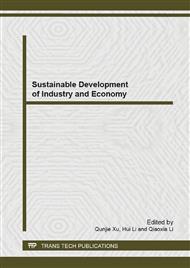p.559
p.564
p.569
p.573
p.581
p.593
p.598
p.603
p.612
Application of the Mean-Variance Theory and Resampling Technique for the Italian Energy Portfolio Settlement
Abstract:
The energy planning based on Mean - Variance theory, guides the investors in investment decisions, trying to maximize the return and minimize the risk of investment. However, this theory is based on strong hypotheses and, in addition, input data are often affected by estimation errors. Moreover, this theory determines poor diversification increasing return and risk of the portfolio, and strong variability of the outputs when inputs are varied.In the first part of the paper, the Mean - Variance theory was applied to the energy generation in Italy; in particular, the analysis was on the actual energy mix, but also assuming the use of nuclear technology and taking into account verisimilar improvement, of technologies in the future.On the other hand, in the second part of the paper, a methodology has been applied in order to limit the problems of Mean-Variance theory applied to the energy mix settlement. In particular, the input variables have been calculated using Monte Carlo simulation, in order to reduce the estimation error, and the Resampled Efficiency TM technique has been applied in order to calculate the resulting new “average” efficient frontier. This methodology has been applied either not limiting or limiting the minimum and maximum percentage for every energy generation technology, in order to simulate constraints due, for example, to the technological characteristics of the plant, the availability of the sources and eventually to norms, to the territorial characteristics and to the socio-political choices. The application of Mean - Variance theory allowed to obtain energy portfolio, alternative to the actual, characterized by higher values of expected returns an lower values of risk.It was also shown that the application of the Resampled Efficiency TM technique with data originated with the Monte Carlo simulation effectively tackles the problems of Mean - Variance theory; in this way, the decision maker is helped in making decisions in the energy system policy and development.Thanks to this approach, applied in particular to the Italian energy contest, it was also possible to evaluate the effectiveness of the introduced modifications to the Italian actual energy mix to achieve the 2020 European Energy Directive targets in particular concerning the reduction of CO2 levels.
Info:
Periodical:
Pages:
581-592
Citation:
Online since:
December 2013
Price:
Сopyright:
© 2014 Trans Tech Publications Ltd. All Rights Reserved
Share:
Citation:


